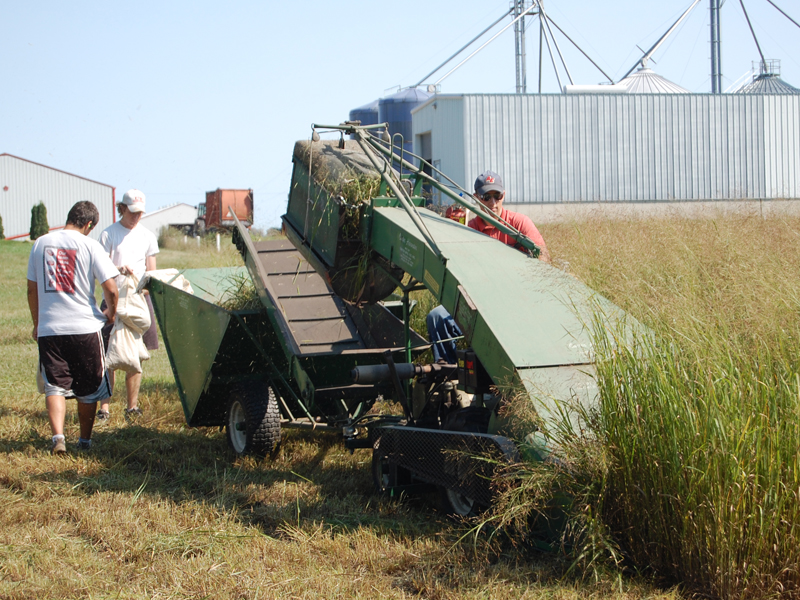Better switchgrass, better biofuel
June 17, 2015 - Kaine Korzekwa
Using switchgrass to produce biofuel is one way to decrease the United States’ dependence on oil, but growing it and making it profitable can be complicated.
 Switchgrass is an excellent candidate for biofuel production. It is an adaptable plant that can grow on millions of acres of U.S. lands that cannot support crop or food production. It is also a renewable resource.
Switchgrass is an excellent candidate for biofuel production. It is an adaptable plant that can grow on millions of acres of U.S. lands that cannot support crop or food production. It is also a renewable resource.
“Many of these lands are currently in the Conservation Reserve Program,” says Michael Casler, a research geneticist with the USDA Agricultural Research Service, located at the U.S. Dairy Forage Research Center. “They are set aside for soil and water conservation only, with no crop production allowed. Growing switchgrass could serve both soil and water conservation goals and provide biomass for energy production.”
However, growing and processing switchgrass is barely profitable. It lacks qualities, such as high biomass yield, needed to maximize biofuel production.
Thankfully, Casler and others are trying to change that by using alternative breeding methods. Zulfi Jahufer is a senior research scientist in genetics and plant breeding at the AgResearch Grasslands Research Centre in Palmerston North in New Zealand, and was a co-researcher with Casler.
But achieving their goals isn’t easy. The ideal switchgrass wouldn’t possess one trait, but many. It would have a high amount of biomass per acre and be able to produce a lot of ethanol. It would also have low levels of lignin, a material found inside plants that prevents maximum ethanol production.
Basic plant breeding is simple. Large numbers of plants are grown and evaluated in the field. Researchers select only the best plants with the desired traits and use them to breed the next generation of offspring, explains Jahufer.
When the ideal plant would contain more than one important trait, it’s inefficient to select for them one at a time. To combat this issue, and breed switchgrass that has the optimal combination of these traits, the researchers tried evaluating plants using the Smith-Hazel Selection Index.
This index allowed the researchers to estimate and combine information on multiple traits. It also looked at the economic value of each trait, which further maximizes the rating.
“The Smith-Hazel selection index was first developed for animal breeding to select for multiple traits,” Jahufer says. “This index is also commonly used in tree breeding, as multi-trait selection is of significant importance in that industry.”
He adds that while the results reported are only predicted responses to selection and are specific to a particular type of switchgrass, the study does bring light to the value of using the Smith-Hazel index. By having a way to select for multiple traits at once, the process of breeding the ideal switchgrass could be sped up considerably.
“A selection index in our study that was based on increasing biomass yield and ethanol and decreasing lignin content enabled identification of individual plant families with potential for enhancing ethanol production,” he says. “These would otherwise have been left out in commonly practiced single-trait selection for biomass yield.”
The two researchers say the next step needed to meet their goals is to use the protocols in an actual breeding program. They will begin to employ the best selection indices over the next few generations to obtain a more ideal switchgrass.
“After we achieve the yield and conversion goals, switchgrass could be a significant component of biomass crop grown east of the Rocky Mountains,” says Casler. “We think we can achieve those goals by 2025.”
This research was recently published in the journal Crop Science.
